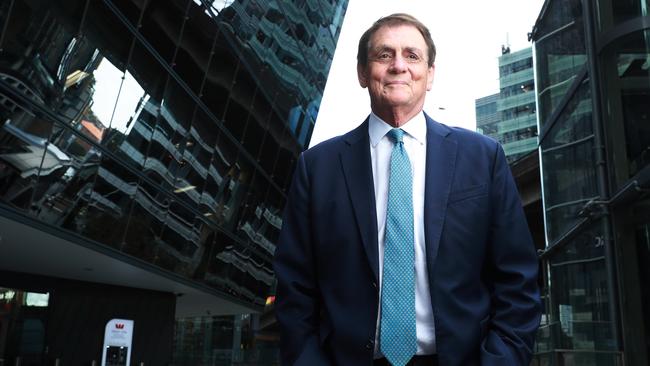Westpac chief economist Bill Evans now believes the RBA’s cash rate will peak at 4.1pc
Westpac chief economist Bill Evans is the latest in a growing chorus of experts who believe the RBA will halt its rate cycle at a peak of 4.1 per cent.

Westpac chief economist Bill Evans has lifted his RBA terminal rate forecast to 4.1 per cent from 3.85 per cent, citing “the RBA’s current resistance to a mid-cycle pause”.
Mr Evans has also lifted his terminal Fed funds rate forecast to 5.25 to 5.5 per cent.
His comments come as the consensus among economists shifts up toward 4.1 per cent from 3.85 per cent.
ANZ, BofA, Deutche Bank, Goldman Sachs, Morgan Stanley, NAB and TD economists also predict a 4.1 per cent cash rate peak. Futures price a peak of 4.28 per cent.
“Over the course of the last few months of 2022 the (RBA) board consistently referred to the possibility of pausing and as recently as December considered a pause as one of three policy options,” Mr Evans said.
“However, the board has adopted a more hawkish approach since the release of the December quarter inflation report which showed underlying inflation at 6.9 per cent compared to the official forecast of 6.5 per cent; goods inflation up in the quarter; and services
inflation particularly strong.
“We also saw the February board minutes where the board did not even consider a pause.”
Mr Evans noted that during RBA governor Philip Lowe’s two appearances in Canberra last
week he outlined his support for a steady approach to policy.
“Abruptly pausing in April, only to resume with a hike in May (as implied by our previous forecast) would not be consistent with this steady approach,” he said.
By May, the RBA will be able to consider the March quarter inflation data, including the trimmed mean underlying measure, which Westpac expects to fall to 6.6 per cent from 6.9 per cent in December.
“We estimate the Reserve Bank is probably expecting around 6.7 per cent,” Mr Evans said.
“This slowdown will not be sufficient for the bank to significantly change its inflation forecasts, which are refreshed for the May meeting.”
The RBA’s current forecast does not envisage that inflation will be back inside the 2–3 per cent target band until June 2025.
In December, RBA board minutes noted a key reason why a pause was not appropriate.
“The bank’s most recent forecasts had indicated that, even with further increases in the cash rate as incorporated in the November forecasts, inflation was expected to take several years to return to the target range,” the minutes said.
With this condition unlikely to change by May, pausing won’t be considered appropriate, Mr Evans said.
But he expected that by the time of the June meeting there would be “credible evidence that demand is slowing; labour markets are easing; and risks of a wage/price spiral have receded”.
“We expect that to be confirmed by the March quarter Wage Price Index report which is forecast to print a soft 0.8 per cent on-quarter gain indicating that wage pressures are not accelerating – as we have just seen with the December report which showed growth
slowing from 1.1 per cent on-quarter in September to 0.8 per cent on-quarter,” he said.
Mr Evans also said a 4.1 per cent cash rate would be “in deeply contractionary territory”
and a pause in rate rises would therefore be “appropriate”.
“The decision to pause will be with a reasonable view that the tightening cycle has peaked,” he said.
“Westpac concurs and expects that the next move in rates beyond mid-2023 will be the beginning of an easing cycle in the March quarter 2024.”
But there are risks to this scenario and they appear to land mainly on the upside.
The downside risks – an earlier easing than March next year – seem low, Mr Evans said.
“While we expect the economy to stagnate in the second half of 2023 there will not be sufficient progress in bringing inflation into line with the target before the end of 2023 to
accommodate earlier rate cuts,” he said.
“We expect inflation in Australia to still be around 4 per cent by end 2023, falling to 3 per cent by end 2024, allowing a policy response to a stagnating economy by the first quarter of 2024.”




To join the conversation, please log in. Don't have an account? Register
Join the conversation, you are commenting as Logout